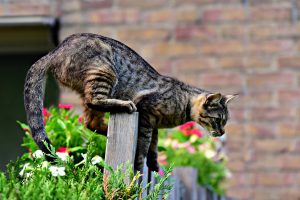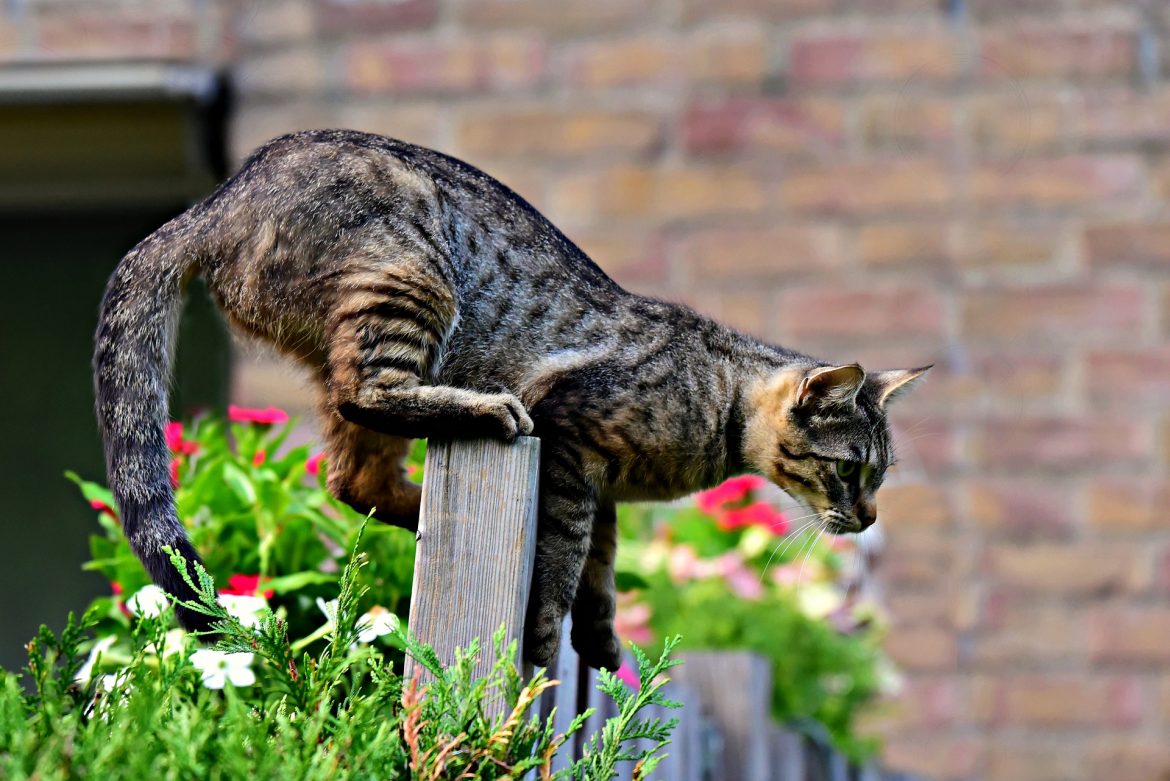It’s pretty easy for Cat Owners to misinterpret their furry friend’s thoughts, feelings, wants, and needs. After all, they can’t talk for themselves! Instead, all we have to work with is the sounds they make to their body language. But did you know your cat’s tail position can tell quite the tale, too?
That’s why it’s important for every cat lover to know what each wag, wiggle, and twitch of the tail means. Some positions might indicate they’re in need of some attention and affection. Others may signal aggression or the need for some personal space. So, no matter if you’re a first-time Cat Owner or an experienced Cat Sitter, whatever it is that your feline friend is feeling, we’re here to help you decode it all simply by looking at their tail.

What your cat’s tail position means
#1. Tall and straight up in the air
If you often see your kitty waltzing through the house with its tail held high, you’ve got yourself one very content cat. Think of it as their way of smiling! Having an upright tail is a common way for them to indicate they’re feeling happy and confident. Interestingly, one study showed that cats also use this position to show other felines that they’re friendly and non-confrontational.
It’s also common to see a happy tabby’s tail tip quiver or buzz while upright. If you notice this, it means your cat is especially cheerful, so be sure to give them lots of love.
#2. Hooked like a question mark
When you see your cat’s tail hooked or bent into a question mark-like shape, it could mean one of two things. First, a hooked tail may indicate your kitty is feeling rather playful. On the flipside, it may also mean they’re feeling doubtful or unsure. If this is your cat’s tail position, you should be able to tell which it is they’re feeling simply by observing the current situation or surroundings. If they’re in a stressful situation (for example, meeting a new pet), it’s safe to assume the latter. However, if your cat seems comfortable, it’s definitely worth offering them a toy and gauging their reaction.
#3. Wrapped around themselves
If your cat’s tail is wrapped around their body or tucked away while they’re sleeping, it generally just means they need some alone time. If their tail is wrapped around themselves while awake, however, it’s a different story. This is a more defensive tail position, signaling fear, anxiety, nervousness, submission, or perhaps even pain. If you see your cat’s tail in this position, try to figure out what it is about the situation or environment that’s stressing them out. If they’re wrapping their tail around themselves in response to an interaction you’ve had with them, they may simply need some space. Should their tail remain in this position for more than a few days, it could be worth paying a visit to the vet for a check-up.
#4. Wrapped around you
There’s nothing cuter than a kitty wrapping its tail around its human, or even around another pet. If you’ve seen this tail position before, you might think it looks a lot like your cat is hugging you. Well, you’re not wrong! When your feline friend curls its tail around someone or something, it’s essentially expressing affection towards that person, pet, or object. Sometimes, your cat may also do this to ask for some attention, food, or to show they’re feeling playful.
#5. Thrashing back and forth
A kitty thumping or thrashing its tail around (or against the ground) is typically a warning sign that they’re not too happy. It could be that something (or someone) is irritating them or making them angry, and thrashing their tail is their way of telling them to stop.
On the other hand, if your cat is slowly swishing (rather than thrashing) their tail from side to side, it’s usually a sign of concentration. If you follow their gaze, you’ll likely see that it’s fixed on a toy, household item, or perhaps even another animal. It’s possible that they’re preparing to pounce playfully towards the object of their attention.
#6. Puffed up
A cat with a puffed-up tail (similar to a pipe cleaner) is a cat that’s fearful, nervous, stressed, or submissive. You’ll often see it accompanied by an arched back with fur standing on end. It’s a classic defense mechanism, designed to make themselves appear larger and more intimidating. Try to avoid interacting with your cat if they adopt this stance, as they may become aggressive. Instead, attempt to find the source of their stress and, if possible, remove it.
#7. Low to the ground
When you see your cat with their tail low to the ground, it’s time to give them some space. A low-positioned tail is commonly triggered by agitation or aggression, so it’s best to back away and give your kitty time to relax.
This rule doesn’t necessarily apply to all cats, however. Certain breeds (like the Persian) have naturally lower-positioned tails. It’s not known why this is, but it’s important to know that it doesn’t always indicate aggression.
Other tips for understanding your cat’s tail position
If you’ve analysed your cat’s tail position and still aren’t sure how your furry friend is feeling, there are other ways to tell. Here are a few questions to ask when trying to decode their emotional state. Combined with their tail position, these other actions can give you a clearer glimpse into that curious mind of theirs.
- Sounds. What noises is your kitty making? Are they purring contentedly, or growling angrily?
- Posture. Does your cat appear relaxed and at ease, or ready to attack?
- Eyes. Do your cat’s eyes look calm and blinking as per usual, or are they wide open and alert?
- Ears. Are your cat’s ears in a relaxed position, facing forward, or are they withdrawn and held back?

